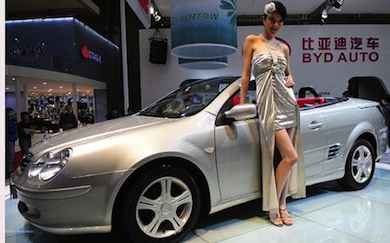
A patent application by BYD inventors aims to facilitate the process by making sure the macihnes can charge super-fast at public charge-points.
The following quote was obtained by the Vertical News from the background information supplied by the inventors: “With the development of science and technology, fuel vehicles are being replaced by environment friendly and energy saving electric vehicles. However, the popularity of the electric vehicles encounters some problems, among which low driving mileage and fast charging technology have become a major problem in the promotion of electric vehicles.
“Currently, large-capacity batteries are used in most electric vehicles. However, although these batteries may enhance a battery life of the electric vehicle, the charging time (is) too long. Although a specialized DC (direct current) charging station may charge a battery quickly, problems such as high cost and large occupied area make the popularity of such an infrastructure encounter a difficulty. Moreover, because of limited space, an in-vehicle charger may not satisfy the requirement of charging power due to the limitation of its volume.
“A charging solution currently used in the market comprises the following solutions.
“Solution (1)
“An in-vehicle charge-discharge device in this solution mainly comprises a three-phase power transformer 1′, a three-phase bridge circuit 2′ consisting of six thyristor elements, a constant-voltage control device AUR, and a constant-current control device ACR. However, this solution causes a serious waste of space and cost.
“Solution (2)
“As shown in FIG. 3, an in-vehicle charge-discharge device in this solution comprises two charge sockets 15′, 16′ to adapt to the single-phase/three-phase charging, which increases the cost. A motor driving loop comprises a filtering module consisting of an inductor L1′ and a capacitor C1′. When a motor is driven, a loss of a three-phase current is generated when it flows through the filtering module, which causes a waste of an electric quantity of a battery. With this solution, during the charge-discharge operation, an inverter 13′ rectifies/inverts an AC (alternating current), and the voltage after the rectifying/inverting may not be adjusted, such that a battery operation voltage range is narrow.
“Therefore, most AC charging technologies currently used in the market are a single-phase charging technology, which has disadvantages of low charging power, long charging time, large hardware volume, single function, restriction by voltage levels of different regional grids, etc.”
“Embodiments of the present disclosure seek to solve at least one of the problems existing in the related art to at least some extent.
“Accordingly, an object of the present disclosure is to provide a charging system for an electric vehicle, which may charge the electric vehicle with a high power by means of a civil or industrial AC grid, such that a user may perform the charge efficiently, promptly, anytime and anywhere. Moreover, a constant-voltage control device or a constant-current control device is not required, thus saving a space and a cost and having a wide battery operation voltage range.
“Another object of the present disclosure is to provide an electric vehicle.
“In order to achieve the above objects, embodiments of an aspect of the present disclosure provide a charging system for an electric vehicle. The charging system includes: a power battery; a charge-discharge socket; a bidirectional DC/DC module having a first DC terminal connected with a first terminal of the power battery and a second DC terminal connected with a second terminal of the power battery, in which the first DC terminal is a common DC terminal for an input to and an output from the bidirectional DC/DC module; a bidirectional DC/AC module having a first DC terminal connected with the second terminal of the power battery and a second DC terminal connected with the first terminal of the power battery; a charge-discharge control module having a first terminal connected with the AC terminal of the bidirectional DC/AC module and a second terminal connected with the charge-discharge socket; and a controller module connected with the charge-discharge control module, and configured to control the charge-discharge control module according to a current operation mode of the charging system.
“With the charging system for the electric vehicle according to embodiments of the present disclosure, the electric vehicle can be charged with a high power by means of a civil or industrial AC grid, such that a user may perform the charge efficiently, promptly, anytime and anywhere, thus saving a charging time. Moreover, a constant-voltage control device or a constant-current control device is not required, thus saving a space and a cost and having a wide battery operation voltage range.
“Moreover, embodiments of another aspect of the present disclosure provide an electric vehicle comprising the abovementioned charging system.
“The electric vehicle can be charged with a high power by means of a three-phase or single-phase current, such that a user may charge the electric vehicle conveniently, promptly, anytime and anywhere, thus saving a time cost and satisfying the requirement of persons.
